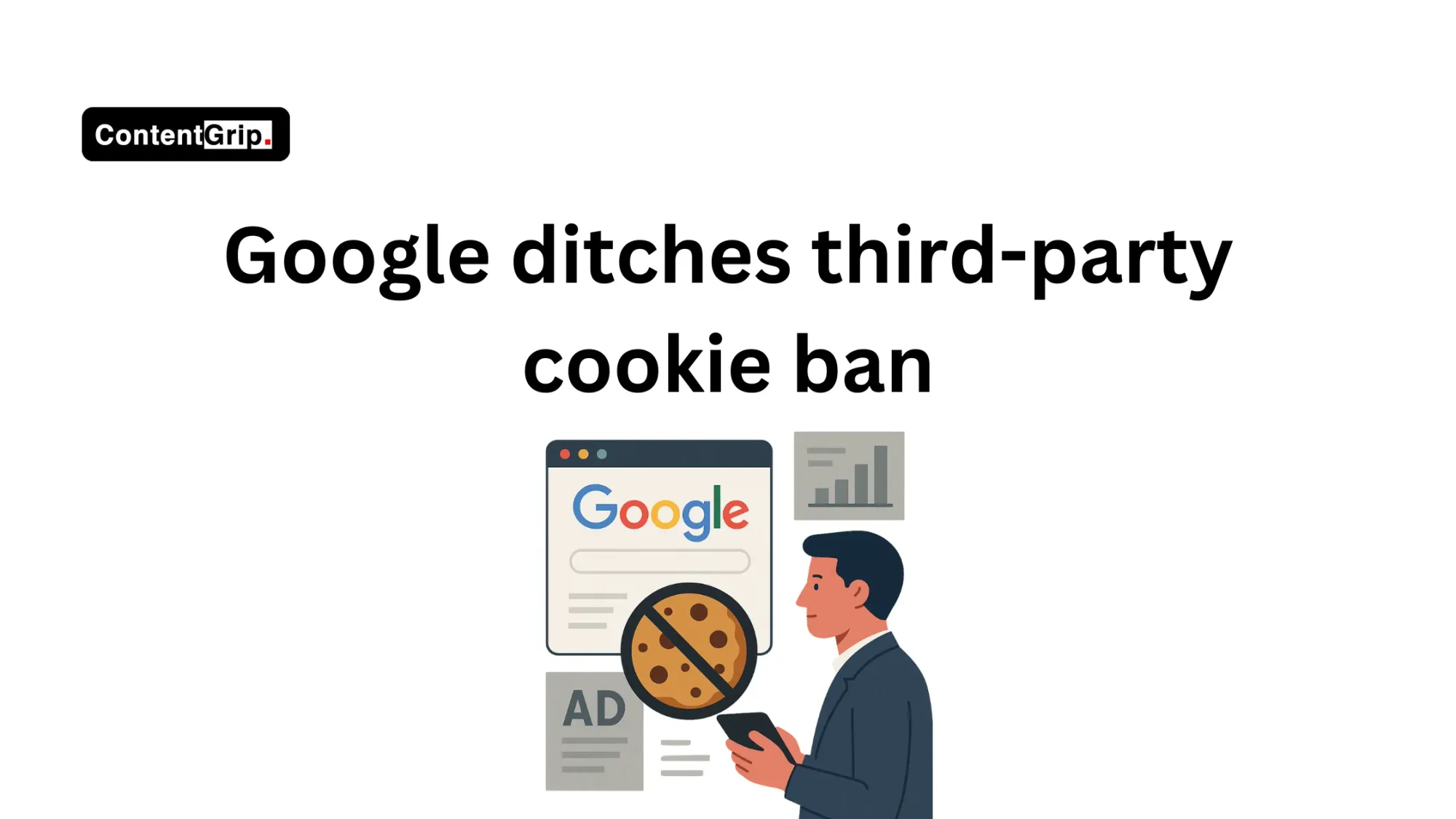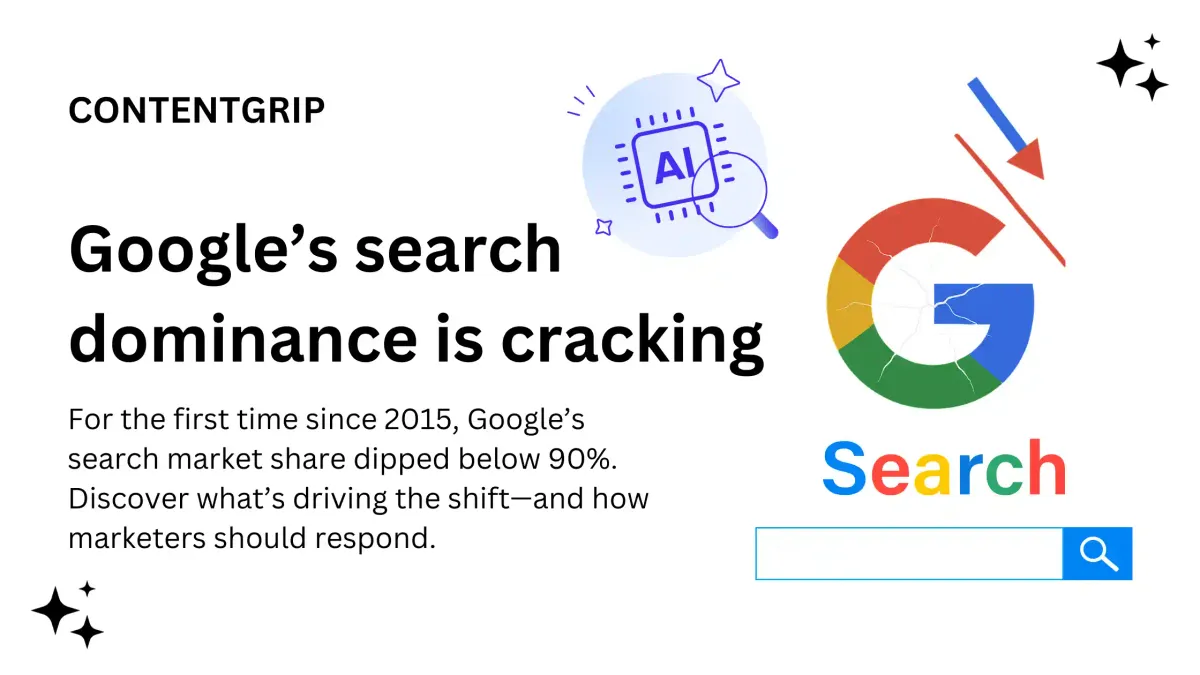Google ditches third-party cookie ban: what it means for marketers
Chrome’s cookie deprecation is off the table—for now. Here's what marketers need to know about Google’s reversal.

Google just confirmed it will no longer remove third-party cookies from Chrome, officially abandoning a years-long effort to overhaul how digital tracking works in the browser.
Instead, the company says it will maintain the current system of giving users a choice—buried in Chrome settings—about whether to allow third-party cookies.
This article explores Google’s decision to backtrack, what it signals for privacy, and how marketers should respond now that the deprecation timeline is dead in the water.
Short on time?
Here’s a table of contents for quick access:
- Why Google canceled its cookie shutdown
- What this means for the Privacy Sandbox
- Strategic takeaways for marketers
- Legal backdrop adds pressure
Why Google canceled its cookie shutdown
Google’s original plan to block third-party cookies in Chrome—a browser with over 60% global market share—was seen as a game-changing moment for privacy and ad tech. But after multiple delays and pushback from regulators and the ad industry, the company has now decided to walk away from the idea altogether.
According to Anthony Chavez, Vice President of Privacy Sandbox, Google will not roll out a standalone prompt asking users about third-party cookies.
Instead, it will stick with the status quo: users can manage cookie settings in Chrome’s existing privacy menu. Chavez cited “divergent perspectives” across the ecosystem—including regulators, publishers, and developers—as a key reason for the reversal.
The decision comes as Google acknowledges major shifts in the privacy landscape since launching the Privacy Sandbox in 2019: more adoption of privacy-enhancing tech, growing interest in AI-driven protections, and evolving regulations around the world.

What this means for the Privacy Sandbox
The Privacy Sandbox was intended to be Google’s answer to privacy-safe ad targeting, offering alternatives to cookies via APIs that advertisers and publishers could adopt. With cookies now sticking around, the role of these APIs becomes more ambiguous.
Chavez hinted that the Sandbox tools may still play a role in the ecosystem—but their prominence is no longer guaranteed. Google says it will “gather feedback” and release a new roadmap for these tools soon, leaving marketers and tech partners in limbo.
Meanwhile, Incognito Mode in Chrome will continue blocking third-party cookies by default, and the browser is set to roll out new tracking protections such as IP Protection by Q3 2025.
What marketers should know
Marketers now face a landscape where third-party cookies are sticking around, but regulatory pressure and consumer expectations around privacy continue to evolve. Here’s how to stay ahead:
1. Don’t take this as a free pass
Google keeping cookies doesn’t mean regulators or consumers are any less concerned about tracking. If anything, the move could attract more scrutiny. Brands should double down on transparency and revisit their cookie consent strategies to stay compliant.
2. Reevaluate your first-party data plan
This is a window of opportunity—not a get-out-of-jail card. Smart marketers should keep building robust first-party data pipelines, including loyalty programs, CRM integrations, and gated content strategies.
3. Watch the Privacy Sandbox space
Google might be rethinking the role of its APIs, but that doesn’t mean they're dead. Stay looped in as the company updates its roadmap. If Sandbox tools become optional instead of mandatory, marketers will need to weigh trade-offs around adoption.
4. Prepare for policy patchwork
The fragmented regulatory environment isn’t going anywhere. While Google has paused its plan, countries like the UK and EU may still push for more restrictive norms. Keep your compliance team close and make flexibility part of your data governance plan.
Legal backdrop adds pressure
Google’s announcement coincides with heightened legal pressure in the US. A federal judge ruled that the company unlawfully dominated two key segments of the ad tech market—publisher ad servers and ad exchanges—further complicating the company’s efforts to be seen as a neutral privacy steward.
The ruling adds weight to critics who argue that Google's privacy decisions are as much about competitive advantage as they are about protecting users.
For marketers, this underscores the importance of diversifying media spend across platforms and avoiding over-reliance on Google's ecosystem.
Conclusion: the status quo is temporary
Marketers may feel a sigh of relief now that third-party cookies are sticking around—but don’t get too comfortable. User expectations, browser policies, and regulations will continue to shift.
The best strategy remains the same: embrace flexibility, invest in alternatives, and be ready to pivot when the next change lands.




